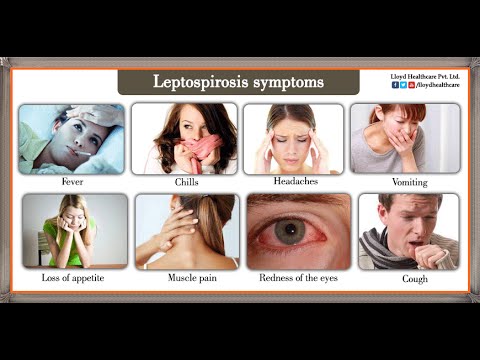4 Ways to Recognize Leptospirosis Symptoms

Introduction
Leptospirosis is a bacterial infection caused by the Leptospira bacteria, which can be found in contaminated water, soil, or animal waste. It is transmitted to humans through direct contact with infected animals, ingesting contaminated food or water, or coming into contact with the bacteria through cuts and abrasions on the skin. Recognizing the symptoms of leptospirosis is essential for timely treatment and preventing complications. In this article, we will discuss four ways to recognize the symptoms of leptospirosis.
1. Watch for flu-like symptoms
The early phase of leptospirosis can present itself with flu-like symptoms that appear suddenly and last about a week. These symptoms can include fever, headache, muscle aches (particularly in the calf and lower back areas), chills, and fatigue. It’s essential to monitor your condition if you’ve been exposed to potentially infected animals or environments. If these flu-like symptoms don’t improve with over-the-counter medications or rest, consider consulting a medical professional.
2. Observe for gastro-intestinal issues
Another common symptom of leptospirosis is experiencing gastrointestinal issues such as nausea, vomiting, diarrhea, and abdominal pain. While these can also be indicative of other health conditions, it’s vital to take note of any recent exposures to contaminated water or animals when considering a potential leptospirosis diagnosis. Maintaining proper hydration and seeking medical advice are important steps if you encounter such symptoms.
3. Check for skin irritation and rashes
Some individuals with leptospirosis may experience skin inflammation and rashes as their immune system struggles to fight off the infection. The rashes typically appear reddish or pinkish in color and may be accompanied by itchiness or discomfort. Keeping an eye out for any skin changes is essential in catching the infection early on, especially if you have been in areas prone to leptospirosis outbreaks.
4. Be aware of severe or life-threatening symptoms
In some cases, leptospirosis can progress into a severe or even life-threatening illness known as Weil’s disease. It’s crucial to recognize the following symptoms, as they may indicate this more severe form of the infection:
– Jaundice, characterized by yellowing of the skin and eyes
– Kidney failure, with symptoms like decreased urine output and swelling in the legs
– Liver failure, which can manifest as abdominal pain, vomiting, and changes in mental status
– Respiratory distress or lung hemorrhage, presenting as difficulty breathing or coughing up blood
– Meningitis or encephalitis, marked by severe headaches, neck stiffness, or changes in mental state
If you experience any of these severe symptoms after potential exposure to contaminated water or animals, seek immediate medical assistance.
Conclusion
Leptospirosis is a serious infection that requires timely recognition for proper treatment. By familiarizing yourself with the symptoms and paying attention to your body after potential exposure, you can increase your chances of receiving a swift diagnosis and appropriate care. If in doubt, consult with a healthcare professional to discuss your concerns and ensure your health remains uncompromised.






